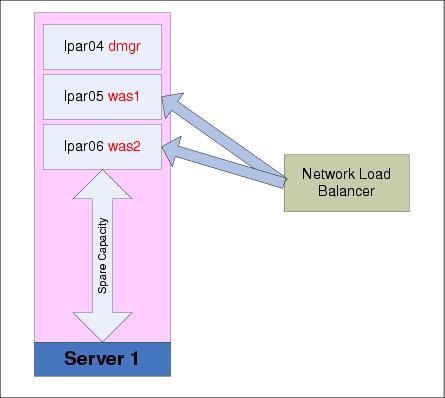|
7.6.3 Unlimited hardwareOf course, not everyone has unlimited hardware. Many customers resist the prospect of purchasing extra hardware for the purposes of disaster recovery, let alone buying another identical copy of their production environment for upgrading purposes. Fortunately, with System p and logical partitioning, it is very possible to carry out this process using your existing hardware and logical partitioning. The following high level steps should be used as a guide to carrying out an appserver upgrade, making it relevant to your particular environment. Similar steps could be used for operating system upgrades and even major application upgrades. For our example, we use a very simple environment (although this sequence is possible even for complex environments), as shown in Figure 7-7.
Figure 7-7 A simple production environment which needs upgrading Consider the following procedure:
Figure 7-8 Create a new copy of the production environment
Figure 7-9 Configure new requests to be routed to the new environment
Figure 7-10 The new environment is serving all requests
Figure 7-11 The new environment is live
|




